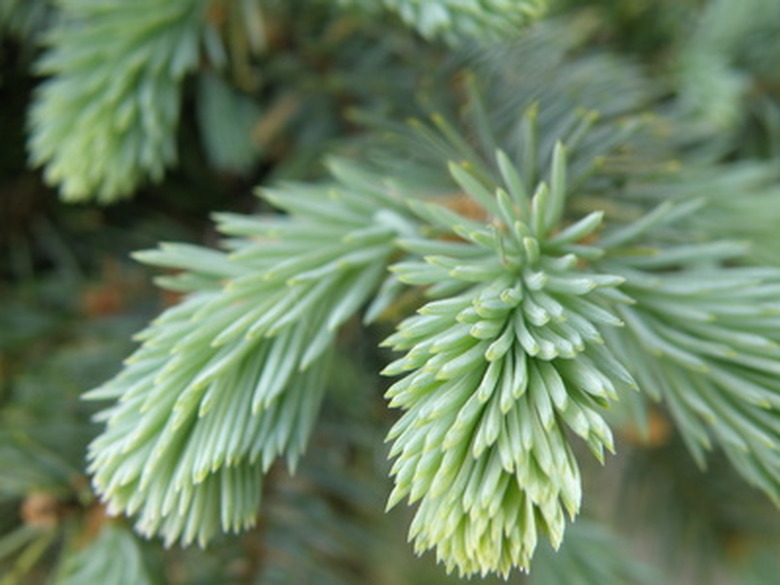How To Grow A Colorado Blue Spruce In A Pot
Things Needed
- Large pot
- Sponge
- Potting soil
- Hand shovel
- Fertilizer
- Water
Colorado blue spruce (Picea pungens) is native to Colorado, Utah and Wyoming. The tree's silvery-blue needles offer an appealing alternative to the green of most shrubs and evergreens. Growing to a height of up to 70 feet, when planted outdoors, the blue spruce is a fast-growing plant. Growth ranges from 3 to 4 inches per year on a young tree to 12 inches per year on a tree with excellent irrigation. Preferring acidic soil, the blue spruce is a hardy tree that is drought tolerant. These beauties are available in silvery blue, green or gold needles, offering an appealing potted addition to your home.
Step 1
Select a pot that is at least 24 inches deep and 18 inches wide. Choose a light-colored or white pot to ensure the soil temperature remains beneficial to the spruce. Lay a sponge across the bottom of the pot, covering the drain holes. This will allow water to escape through the holes, but leave the soil in the pot. Fill the pot with potting soil, leaving a 2-inch space between the soil and the top of the pot. Apply an evergreen fertilizer to the soil and work in, using your gloved hands or a hand shovel.
- Colorado blue spruce (Picea pungens) is native to Colorado, Utah and Wyoming.
- Choose a light-colored or white pot to ensure the soil temperature remains beneficial to the spruce.
Step 2
Dig a hole in the center of the pot large enough to carry the root ball of the tree. Snug the tree into the hole and cover with soil. Firmly press the soil around the base of the tree. The root ball should be completely covered by soil, with only the tree trunk appearing at the soil level. Water the blue spruce until water begins to drain through the drain holes in the bottom of the pot.
Step 3
Place the pot out of direct sunlight. The heat from the sun will change the temperature of the soil in the pot and cause damage to the tree. Spruce trees can be maintained indoors, with added care. Water regularly, keeping the soil moist throughout the pot. Do not allow the soil to become soggy. This will lead to root rot. Transplant the tree once it becomes too large for the chosen pot. It can be transplanted outdoors or into a larger pot. Prune the evergreen in the fall when the climate is cool.
- Dig a hole in the center of the pot large enough to carry the root ball of the tree.
- The root ball should be completely covered by soil, with only the tree trunk appearing at the soil level.
